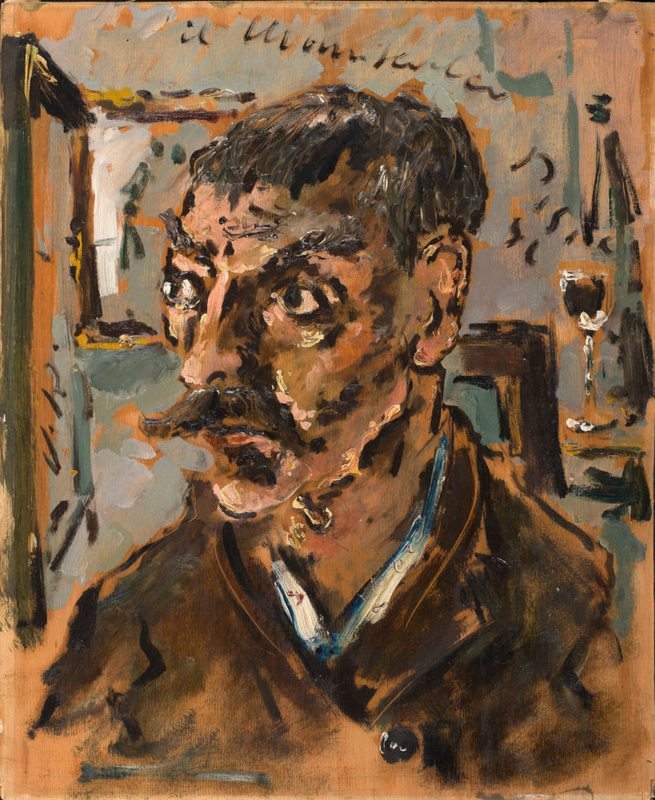From Fontana to De Pisis, from Carrà to Guttuso: the Piccioni Collection on display in Pienza.
My Boast, My Heritage. The Art of the 1900s in the Vision of Leone Piccioni is the title of the major exhibition on twentieth-century art that the City of Pienza is offering from Aug. 29, 2020, to Jan. 10, 2021, in the Museo della Città, in the heart of Tuscany’s magnificent Ideal City. The exhibition focuses on the collection of critic and journalist Leone Piccioni (Turin, 1925 - Rome, 2018), and in particular on his vision of art, indicating that that twentieth century in painting is what was chosen, brought together and hung on the walls of his home by a fine intellectual, Piccioni indeed, over the course of a lifetime.
The collection of art that Leone Piccioni assembled throughout his long existence mirrors his having been one of the finest intellectuals Italy could boast of in the second half of the twentieth century. The list, in strict alphabetical order of the artists in the Piccioni Collection, recites the names of artists such as Afro Basaldella, Remo Bianco, Alberto Burri, Giuseppe Capogrossi, Carlo Carrà, Mario Ceroli, Filippo De Pisis, Piero Dorazio, Jean Fautrier, Lucio Fontana, Remo Formichi, Giosetta Fioroni, Franco Gentilini, George Grosz, Renato Guttuso, Carlo Guarienti, Mino Maccari, Mario Mafai, Giacomo Manzù, Mario Marcucci, Giorgio Morandi, Ennio Morlotti, Aleardo Paolucci, Ottone Rosai, Piero Sbarluzzi, Mario Schifano, Gregorio Sciltian, Graham V. Sutherland, Venturino Venturi. Present in the Collection sometimes with several works, even very different in characteristics and size.
Piero Pananti and Gloria Piccioni, Leone’s daughter, who are curating the Pientina exhibition, emphasize the spirit with which the Collection was established over time: “the love of beauty and culture, the impulse for sharing the arts and knowledge, the elective affinities that bind the critic to the painters, poets, and intellectuals who are his friends.” And Piccioni’s long closeness with Ungaretti and his choice of Dorazio to illustrate La Luce, his collection of poems from the years 1914 - 1961, immediately comes to mind. Because Piccioni, as an authentic intellectual, does not put up any fences, seeking, if anything, assonances between painting, literature, poetry, music, theater... Within that Culture that he really knew how to divulge in his television broadcasts, when TV was still a tool, perhaps “the” tool, of growth, including cultural growth, of an Italy in search of a new identity in the difficult but vital years after World War II.
Leone Piccioni was a student of Giuseppe De Robertis and Giuseppe Ungaretti. A professor of modern and contemporary Italian literature at the University la Sapienza in Rome and then at Iulm in Milan, he joined his academic and literary critic career with that of a journalist and RAI executive. He was news director, head of the third page of Il Popolo, editor of L’Approdo letterario and editor of the radio and television program of the same name, and later deputy director general of Rai. Editor of Vita d’un uomo, the collection of all the poems of Giuseppe Ungaretti (Milan, Mondadori, 1969), he is the author of numerous essays dedicated to authors including Pavese, Vittorini, Gadda, Foscolo and Leopardi, travel diaries, memoir books, and portraits. And it is precisely the formula of the ’portrait,’ emblematic of that belonging to “literature as life,” the hallmark of his research and teaching, that is at the heart of one of the most famous of Leone Piccioni, Maestri e amici (Rizzoli, 1969), where in addition to the profiles of his masters (De Robertis, Ungaretti, Cecchi, Bo), those of his painter friends Alberto Burri, Renato Guttuso, and Giacomo Manzù, featured in the collection of works on display in this exhibition, stand out. Leone Piccioni’s most recent books include Ritratto in bianco e nero (Quaderni del Circolo “Silvio Spaventa Filippi,” 2010), Un’intimità ormai impossibile (Florence, Pananti, 2014), Attualità del mio Novecento (edited by Silvia Zoppi Garampi and Giovanni Piccioni, Dante &Descartes, 2015), Ungaretti and the Buried Port (Succedeoggi Roma, 2016), How is all life and its travail - Lessons on Eugenio Montale’s “Ossi di seppia” (Dante & Descartes, 2017) and, published posthumously, Lungara 29 - Il caso Montesi nelle lettere a Piero (Polistampa, 2018).
Pictured: Filippo De Pisis, The Farrier (1941), Oil on canvas.
 |
| From Fontana to De Pisis, from Carrà to Guttuso: the Piccioni Collection on display in Pienza. |
Warning: the translation into English of the original Italian article was created using automatic tools. We undertake to review all articles, but we do not guarantee the total absence of inaccuracies in the translation due to the program. You can find the original by clicking on the ITA button. If you find any mistake,please contact us.




























